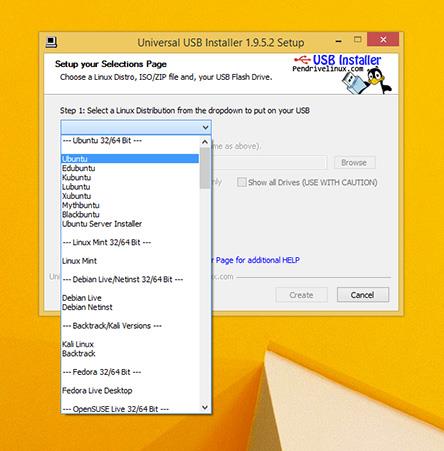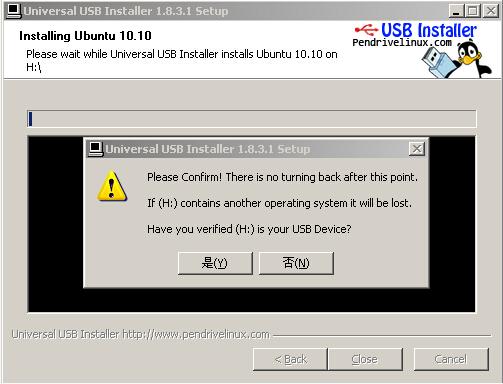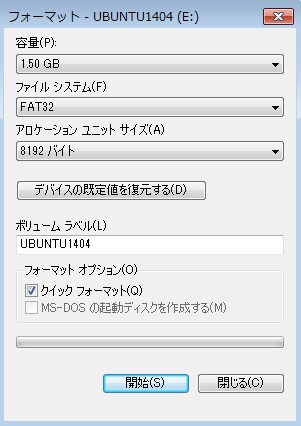

- #Universal usb installer for ubuntu 18.04 install#
- #Universal usb installer for ubuntu 18.04 portable#
- #Universal usb installer for ubuntu 18.04 code#
- #Universal usb installer for ubuntu 18.04 iso#
- #Universal usb installer for ubuntu 18.04 download#
We need at least a partition with a mount point root ( /). This is when the USB drive needs to have been mounted before we proceed Partition and format the USB driveĪfter having chosen Something else the graphical partition manager GParted will guide us through the partitioning process: Mount the USB drive to the installation environmentĪfter we started the virtual machine ( USB support needs to have been set up first) to boot the installation CD we need to mount the USB drive either by clicking on the small icon in the bottom panel or by choosing from Devices -> USB Devices menu of Virtual Box Manager. Make sure the boot order of the virtual machine is set to boot from CD.
#Universal usb installer for ubuntu 18.04 iso#
iso image of our installation CD to mount as CD drive. In the Storage menu from Virtual Box Manager we select the. Mount the installation CD to the virtual machine:
#Universal usb installer for ubuntu 18.04 download#
Also we may want to create a bridged network in order to be able to download files during the installation. 128MB), and adjust CPU settings according to our host hardware. We then need to assign system memory (e.g.
#Universal usb installer for ubuntu 18.04 install#
We create a virtual machine for a Linux/Ubuntu environment (32- or 64-bit, depending on the installation medium):Īs we want to install to an USB drive we do not create a virtual harddisk (VDI) for this machine by unticking the box in the following window: Create a virtual machine for the installation live environment: For USB 2.0 support the closed source but free PUEL-version of Virtual Box is needed.
#Universal usb installer for ubuntu 18.04 portable#
In order to install Ubuntu to a portable external USB drive (either disk or stick) we may also use Virtual Box to install from a virtual environment. Installing Ubuntu to a removable USB drive with Virtual Box This should let you boot straight into your HDD from your USB key's GRUB. You may need to fiddle with your BIOS settings to make this work.Ī nice (or annoying, based on your use case) thing about Ubuntu on a USB is that next time it'll refresh GRUB, it'll also detect and add to the list the kernels and operative systems on the HDD. On a reboot, however, the system booted fine.ĥ.

I tried to shutdown the virtual machine cleanly after the setup, but it hung.
#Universal usb installer for ubuntu 18.04 code#
I had dpkg exiting with error code 1 without being able to review the error - no packages were broken as a result, however.

Things are a little wonky - it is alpha quality software, after all. Personally, I'd rather manage the upgrades manually with a tool such as aptitude (which does no longer ship with Ubuntu by default).Īlpha-quality software. It is not guaranteed that the repositories will be in a consistent state by the time you run the installer. Skip the option to automatically download and install updates. If you're using the alternate installer, make sure you set the noatime flag to further reduce the amount of writes to the disk. Simply allocate a single partition for /. That's no good, as swapping becomes super slow (seconds-long system freezes slow) and quickly kills your drive's life. Avoid using the automatic partitioning system, as it will create a swap partition on your USB key. From inside the "QEMU" window, install as you would normally do. Install normally.Īt this point you are working on a virtual machine that sees your USB key as the only connected hard drive. to install the i386 ISO of the Natty Narwhal desktop - the file name will vary if you download a different ISO image.ĭetails for your virtualization solution of choice will vary, but you want to use the device file of your USB key as the VM's hard drive.Īppend -boot order=d to the kvm command to make it boot from the image in case it tries to boot from the 'hard disk' and fails because it cannot find an operating system there. I made sure (with file) that my USB key was in /dev/sdb, then ran: sudo qemu-system-x86_64 /dev/sdb -cdrom ~/.cache/testdrive/iso/ubuntu_natty-desktop-i386.iso You need to make sure you select "Don't Partition" before it lets you format the disk.ģ. Choose the destination USB key, unmount all partitions, and select Format Drive. You can do so from System → Administration → Disk Utility. I failed earlier because I didn't perform this step, so skip at your own risk! You need a key that is at least 3 GB in size. This is important if you already have anything looking like a Linux install on your disk, or the installer will not want to touch that disk, for some reason. The Desktop installer refuses to continue if there is less than 4.4 GB of free disk space. If your key is smaller than 4.4 GB (for Ubuntu 11.04 (Natty Narwhal)), you must get the alternate installer.


 0 kommentar(er)
0 kommentar(er)
